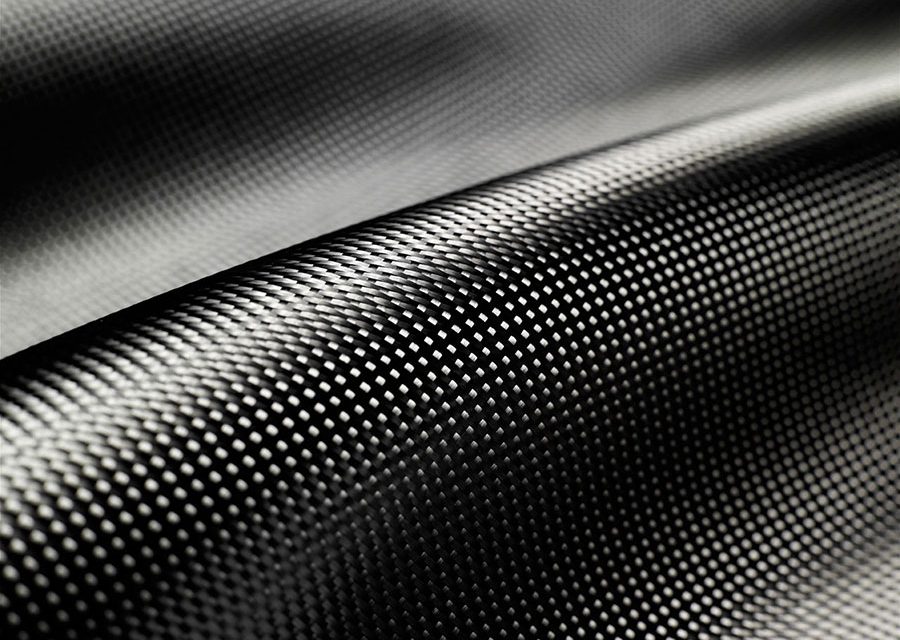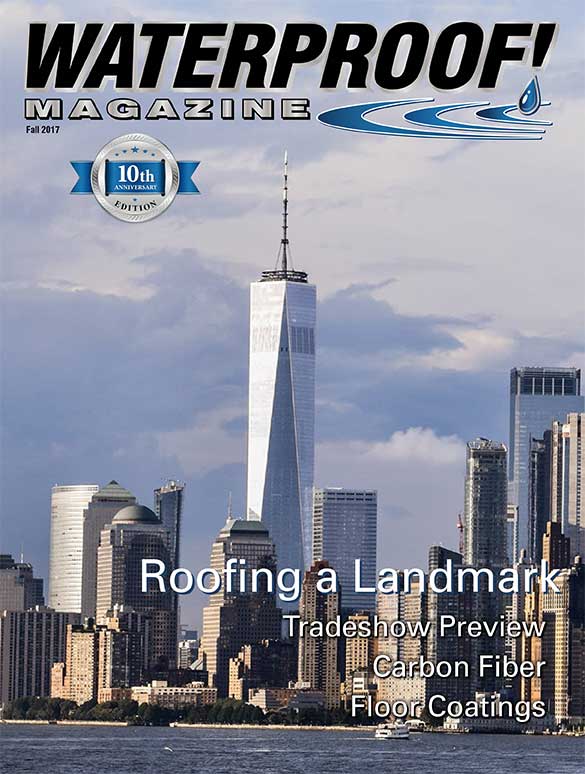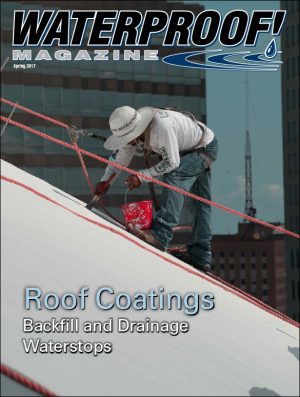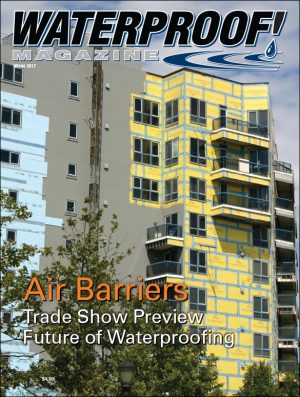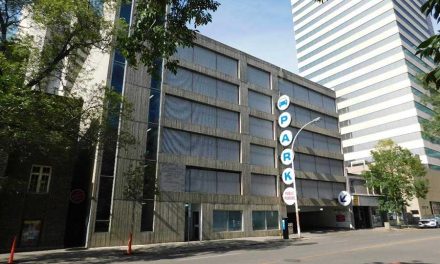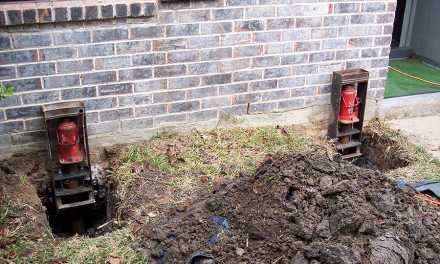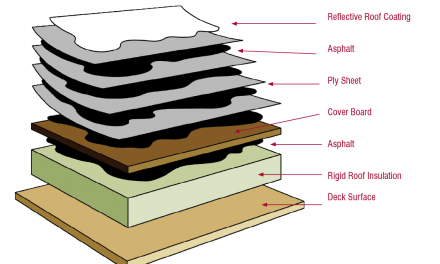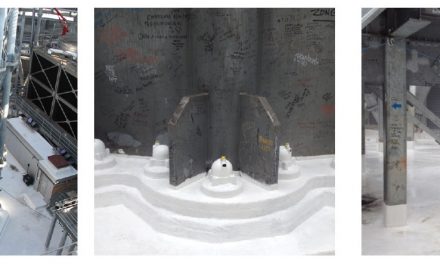Carbon fiber is a truly remarkable material. Its tensile strength is about ten times stronger than steel, yet it weighs only one-fifth as much.
Because carbon fiber will not stretch or break— even under incredibly high tension—it is rapidly gaining popularity for repairing bowed basement walls and making other foundation repairs.
Carbon fiber is one of the most versatile and best solutions for crack repair on block walls. If the joint is simply re-tucked or patched, it is likely that the crack will reopen, but when carbon fiber is used, the carbon fiber will resist this movement and keep the wall intact. In most cases, carbon fiber can be used for a permanent crack repair solution.
But its use is not restricted to residential projects or block walls. Carbon fiber is a proven solution to repair or reinforce cast-in-place concrete as well. This space-age structural repair material is moving out of basements into the commercial sector, where it is being used to repair apartment buildings, sports arenas, concrete slabs, and more.
High-Rise Wall Repair
For example, it was used to repair a newly constructed high-rise in downtown Nashville, where engineers had concerns with cold joints at the top of the approximately 20-story building. The suggestion to use carbon fiber actually came from the contractor, Derek Veselich, owner of Ground Up Builders, Inc. He was at the jobsite to estimate the cost to inject the cracks with epoxy, but while quoting this work, he recommended that carbon fiber be used in conjunction with the epoxy injection. The engineers agreed, and consulted Veselich’s supplier, Rhino Carbon Fiber, who determined their 12-inch-wide horizontal tow crack repair system should be used.

Carbon fiber sheet was used to reinforce cold joints near the top of a Nashville skyscraper. The recommendation came from Derek Veselich, owner of Ground Up Builders (below) who was on the jobsite for epoxy crack injection work.
Time was of the essence, so Rhino sent the materials via overnight express and Ground Up began the work the following day. They installed the carbon fiber prior to the injection in order to seal the cracks, and then installed the ports through the carbon fiber. Later, when cracks were discovered in the newly constructed pool on top of the building, Veselich was able to use the same repair method to address these cracks, too.
Bridge Deck Modernization
The key to carbon fiber’s remarkable performance is that it does not stretch, even under unbelievable loads. Joe Dattilo, president of Gateway Composites, says aerospace-quality carbon fiber has an ultimate tensile strength as high as 36 million pounds per square inch (msi).

Pre-cured carbon fiber straps proved to be an easy and affordable way to strengthen this Ohio bridge.
Nationwide Reinforcing sells a carbon fiber strap called “The Reinforcer.” It’s “pre-cured,” meaning the fibers have already been saturated with epoxy to form a pre-cured plate with nearly ten times the tensile strength of 36,000 PSI steel. These carbon fiber straps are usually used for basement structural repair, but are also being used in innovative applications in the commercial sector.

A few years ago, the Clinton County (Ohio) Department of Transportation needed to strengthen a three-span, concrete slab bridge. The structure was under-designed for current traffic volumes and loads. Additionally, the county wanted to eliminate load restrictions so that school busses could safely cross. Replacing or reinforcing the bridge with traditional materials would be time consuming and expensive.
Bob Thompson, president of Nationwide Reinforcing, consulted with county engineers and determined that carbon fiber presented another option.
The Reinforcer was installed in 40-foot lengths on 12-inch centers, and epoxied securely to the bottom of the bridge deck to prevent it from flexing. Then, the Reinforcer Shield, a multi-directional flexible carbon fiber sheet was placed in 40-foot lengths continuously across the bottom of the slab.
Together, they added the required stiffness and flexural strength to the existing concrete bridge deck. After curing, full scale load testing was performed to confirm the design and all restrictions were successfully eliminated.
Pedestal Reinforcement
Carbon fiber is useful for smaller projects as well.

The cracked pedestals of this basketball pavilion were wrapped with carbon fiber to repair and reinforce the cracked concrete
Gadberry Construction Company in Houston, Texas needed to repair a city basketball pavilion. The open-air basketball court was covered with a roof supported by steel arches. These arches sat on short concrete piers, which had been damaged during installation.
Gadberry reached out to Rhino Carbon Fiber, and together with structural engineers working for the city of Houston, devised a solution. Carbon fiber sheet is flexible and is capable of conforming to irregular shapes such as these concrete piers. Olshan Foundation Repair Co., a local carbon repair specialist, got the nod to do the actual repair work.

Jarred Jones, director of engineering and product development at Rhino says, “They repaired the cracks using epoxy injection and then wrapped the pedestals with bidirectional carbon fiber, confining the arch base so they could handle the required loading.” He explains, “If concrete fails under compression, it expands. Carbon fiber can constrain that expansion, strengthening the column or member.”
Because the epoxy resins used with Carbon Fiber Reinforced Polymer (CFRP) can degrade if exposed to ultraviolet radiation, the carbon fiber repair was covered with an elastomeric stucco which matches the color of the adjacent arches. It protects the CFRP from UV rays, and gives the city a long-lasting, maintenance-free coating.
Corner Reinforcement
About ten years ago, the U.S. Government was performing specialized testing to determine if large CMU structures could be built without the use of steel. The project consisted of two large self-contained boxes made of 12-inch hollow concrete masonry units (CMU) or cinder blocks.
One test box was 28’ long x 12’ wide x 12’ high and would be used to hold small pea gravel, which was lightly compacted. The second box was 26’ long x 18’ wide x 9’4” tall, and filled with mechanically compacted topsoil.
The engineers at Nationwide Reinforcing devised a system of carbon fiber straps and sheets to replace the conventional steel reinforcement, placing the straps vertically near the centers of the walls, and wrapping the sheets horizontally in bands around the exterior.

The tests proved that even with zero reinforcing steel, carbon fiber can restrain enormous soil loads.
Carbon Fiber Stitching
One of the most recent innovations in carbon fiber is using staples to constrain cracks. Called “stitching,” the technology has been around a while, but recently has taken a step forward with “Concrete Crack Lock,” a dumbell-shaped piece of pre-cured carbon fiber that results in stronger repairs while requiring less time and materials to install. It is available from Rhino Carbon Fiber.
One contractor who has adopted this new technology is Liquid Coating Designs, based in California’s Bay Area. Over the past 20 years, they’ve installed more than two million square feet of concrete coatings. One of the biggest challenges has always been how to deal with cracks in the existing concrete substrate. If not reinforced adequately, these cracks telegraph through the final coating and mar the surface. In the past, their practice was to bend rebar in the shape of a staple, and then drill and grind away the concrete until these giant “staples” sat flat across the crack. The approach was effective, but generated excessive amounts of dust and required substantial labor.

High-tech carbon fiber “staples” can constrain cracking in concrete slabs and extend the longevity of deck coatings.
While visiting the World of Concrete tradeshow earlier this year, Liquid Coatings spotted the product at the exhibit, and used it a few months later on a pool deck repair at the Summerset II Country Club in Brentwood, Ca. After the cracks in the slab were reinforced with carbon fiber, the entire slab was coated with Liquid Coating’s LiquidStone product.
Jones says, “We’ve gotten a huge response on these. We’ve sold carbon fiber staples for years, but Concrete Crack Lock is so much better. Conventional CFRP staples rely more on the bond strength of the epoxy, which depends on the craftsmanship of the individual installer. These are embedded into the surface, so they actually lock into the concrete and transfer the load directly.”

Like other carbon fiber stitching methods, Concrete Crack Lock works on both horizontal and vertical surfaces, and will not corrode over time as steel products would.
Fall 2017 Back Issue
$4.95
Floor Coatings as Waterproofing
AVAILABLE AS DIGITAL DOWNLOAD ONLY
Description
Description
Additional Info
Additional information
| Magazine Format | Digital Download Magazine, Print Mailed Magazine |
|---|

